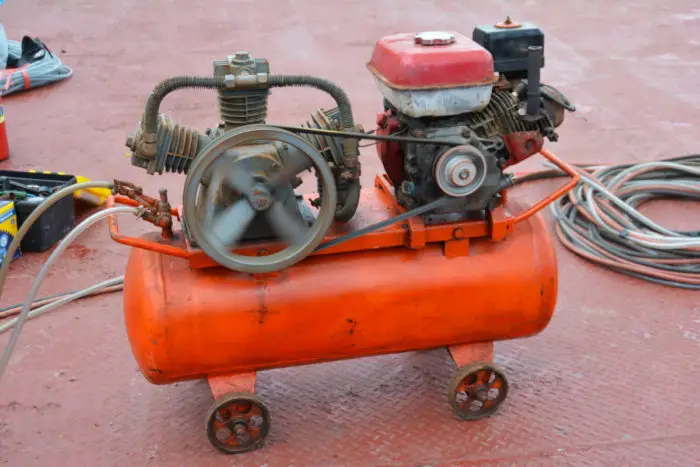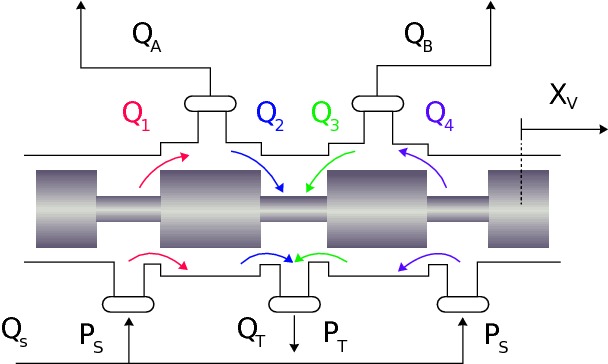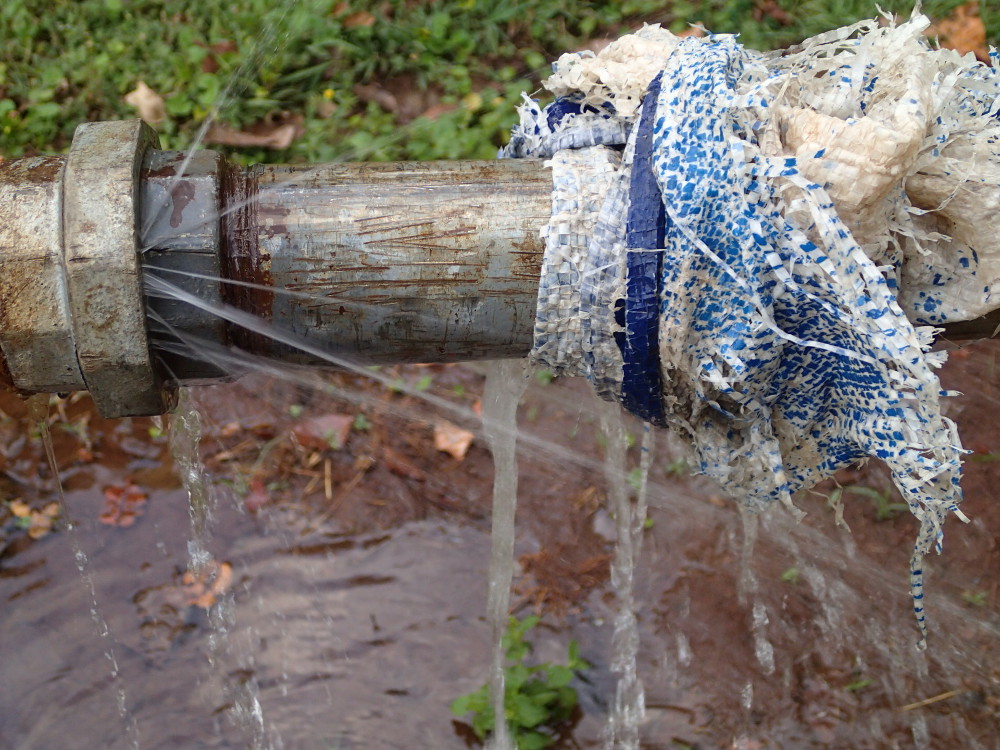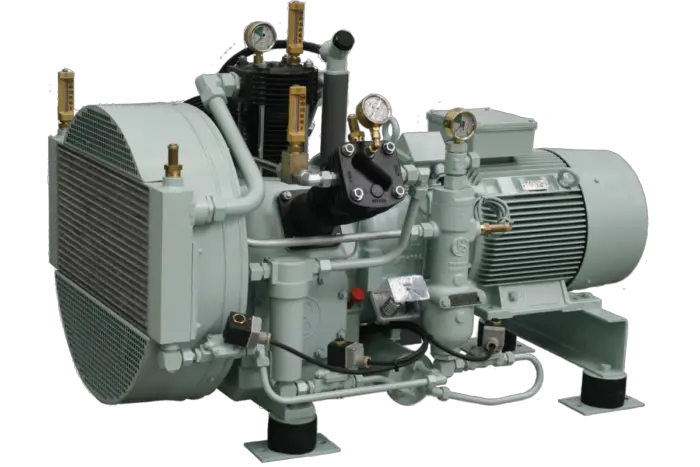I’m often asked why pneumatic systems operate at much lower pressures than hydraulic systems. There are many benefits to using pneumatic systems especially in the food and medical industries. But there is always the need for larger cylinders and motors due to the low pressures. So why can’t we just turn up the pressure on these systems?

While it is theoretically possible, pneumatic systems are limited to low pressures due to cost, leaking and safety reasons which stem from the compressible nature of air and its reduced viscosity. Compressible fluids, like air, are far more difficult to pressurize than their hydraulic equivalents.
Compressible fluids like air, oxygen and hydrogen have densities that vary with pressure. If I have a pneumatic cylinder filled with air at atmospheric pressure and then start to add weight to the rod, then it will retract and increase the pressure. It retracts because the air molecules are able to get closer together due to the increased pressure.
If we do the experiment again with hydraulic fluid, we will see an increase in pressure when we add the weight, but no change in volume. This is because hydraulic fluid is incompressible.

Drastic Cost
Design engineers need to be able to compute the cost of operation of machines they design. If we look at the power consumption of a hydraulic pump pressurizing 1 cfm (7.5 gpm, 28 lpm) of oil to 3000 psi (207 bar) and a 93% efficiency, it would require 14 hp (10.5 kW). As long as the fluid is doing work, it will remain “cold”.
Theoretically, a screw type air compressor with an efficiency of 65% would require 107 hp (79.9 kW) to do the same amount of work in an iso-thermal process. That is 7.6 times the energy of the equivalent hydraulic system.
It uses a lot more energy to compress air than to pressurize oil. This simply is a function of using a compressible gas rather than a liquid.
Most of that work will be converted to heat in the process. The compressors and tanks will get very hot and will need to have large cooling systems. The cooling system will be very costly due to the increased horsepower requirements
Another complication, that we will expound on shortly, is there will be a need for multiple compressors to step up the pressure to prevent leakage. Unlike the cheap and inexpensive hydraulic gear pump (lots of options for under $200), air compressor stages are more expensive and you can spend a small fortune on an efficient set that meets your needs.
Leakage
Why can’t we just use hydraulic components? On the surface, swapping out pneumatic valves and cylinders for hydraulic components and increasing the pressure seems like a logical idea. However, these components are designed to work with hydraulic oil and not air.
Air is much less viscous and dense than oil. We know this to be true because we can walk through a room filled with air very easily, but we would struggle to walk through a pool of hydraulic oil.
When looking at a typical hydraulic directional control valve, we have a machined cavity and a spool running inside of it. In the image below, you can see that fluid can flow where the arrows are. As the spool shifts, this is intentional. However, we may want the Ps (Pressure Supply) port blocked in the neutral position.

Although it is greatly exaggerated in the image, there is a gap between the gray spool and the bore is slides in. (notice there are no seals between the work ports.) This gap is usually under 0.001″ on a hydraulic valve and special care is taken to make sure this is round, smooth and accurate. There is a fine line between the valve spool sticking and there being too much clearance.
Since there is clearance, you will have hydraulic oil leaking in the valve. Generally, this is able to be measured in drops per minute. If there is designed leakage with hydraulic oil, there will be much more leakage when we run compressed air through it.
Leakage is really just cost. We don’t really care if air “leaks out on to the floor” as my mentor told me. We do care about the mess hydraulic oil makes.

Compressed air leakage is 100% money down the drain, so when you hear air leaking out get it fixed ASAP. The audible leaks are the most expensive and detectable, but most systems have many more smaller but inaudible leaks that can cost your just as much if not more.
Increasing the pressure doesn’t make this get any better.
Directional control valves aren’t the only components subject to increased leakage. Air can leak around seals in compressors, cylinders and rotary motors much easier. A hydraulic cylinder used with compressed air, may need tighter tolerance rods, bore and seals. Extra machining is expensive and the seals will need to be very high end. Of course, this all leads to increased costs in components.

To improve compressor efficiency, you will want to use multiple stages. This keeps the pressure differential relatively small so that there is less force and wear on the piston seals. For example, you might have: the first stage going from 0 to 80 psi; second stage 80-130 psi, and the third stage from 130 to 175 psi. These small jumps allow the the air to be compressed efficiently and even allows the air to cool a little before going to the next stage.
In order to get from 0 psi to 3000 psi, you will need numerous stages to have an efficient design.
The result of trying to use off-the-shelf hydraulic components with compressed air is that you will constantly be chasing leaks in your system.

Danger
Unintended Motion
Unintended motion is one of the largest contributors to machinery related injuries. Anytime equipment moves there is a chance that some part of your body could get smashed or cut off!
It is nearly impossible to use pneumatics for load holding in a de-energized capacity. In a cylinder application, it near impossible to hold it in a certain position without constant position feedback and adjustment. Leakage and changes in temperature, load or pressure will cause motion with the compressible fluid.
While this is a situation that exists with low pressure pneumatics, it will be harder to control and motion will occur more sporadically with higher pressures. With hydraulics, you can add PO check or counterbalance valve and you are set.
Explosion
Now, let’s address the elephant in the room. Besides leaking air everywhere and it costing a fortune to operate, high pressure pneumatics aren’t used because there is a severe danger from explosion. Likely, there won’t be fire involved, but that compressed air wants to escape and escape fast.

If you have ever seen a car tire rupture under pressure, it is an impressive sight. The tire can tear out very quickly and you can be hit with shrapnel. Keep in mind that most tires are only pressurized between 40 and 120 psi (2.8 to 8.3 bar). We’re talking about going to 3000 psi (207 bar)!
Keep in mind that all the extra energy from our example (107 hp – 14 hp), is stored in the system and is waiting to be released. If there is a rupture in a hydraulic line, you will see oil dribbling on the ground or it spraying at high pressure. With compressed air, you will hear “BOOM” and wonder where the leaking component went. (Beware of the shrapnel)
For this reason, pneumatic systems are usually kept under 100 psi (6.89 bar).
Mitigating Risk
In order to mitigate risk with pneumatic systems, components like pressure vessels are often tested to high pressures before being placed in service. The test is a hydrostatic test, where an incompressible fluid, usually water, is used instead of air. This way, if there is a leak, water will drip on the ground or spray out. If air was used, it would be much more likely to explode.
Another short cut I’ve seen is using plastic PVC pipes to run compressed air to work stations. While the material is much cheaper than steel pipe, it is not safer. I worked at a shop that had PVC pipe and one line was struck and blew out the side of the pipe nearly 7 ft away from the impact. Luckily no one was hurt.
Conclusion
While it is fun to run down the road and wonder if you could increase the pressure in pneumatic systems to that of hydraulics, it just isn’t practical or safe. Pneumatics already is more expensive and prone to leaking. Why would you want to amplify these issues?

